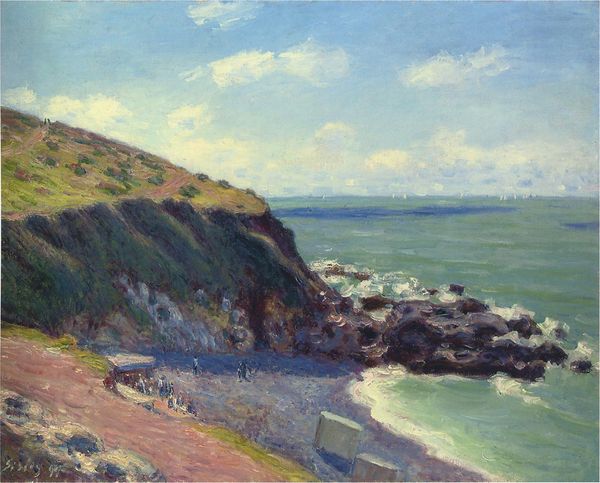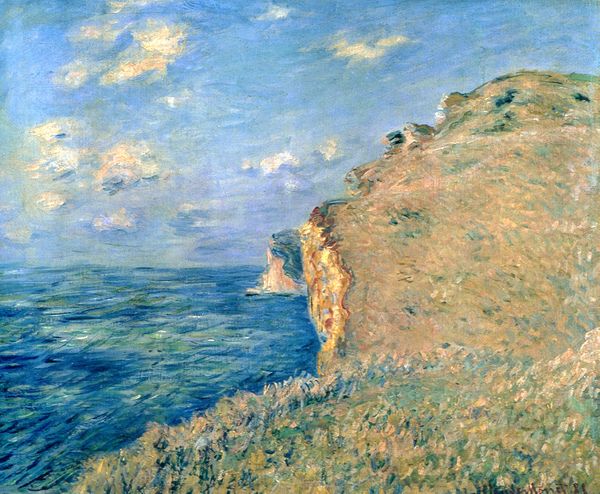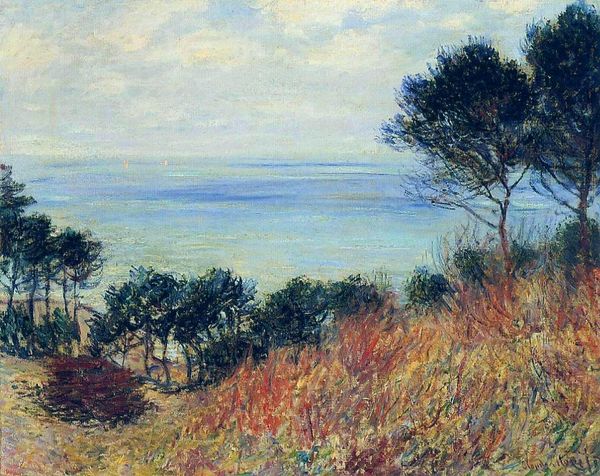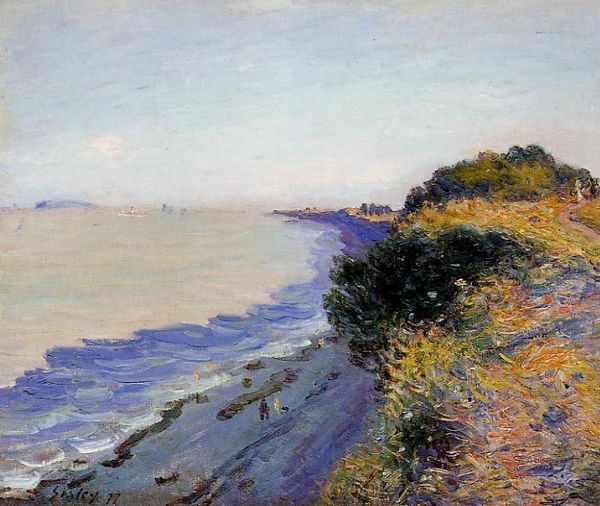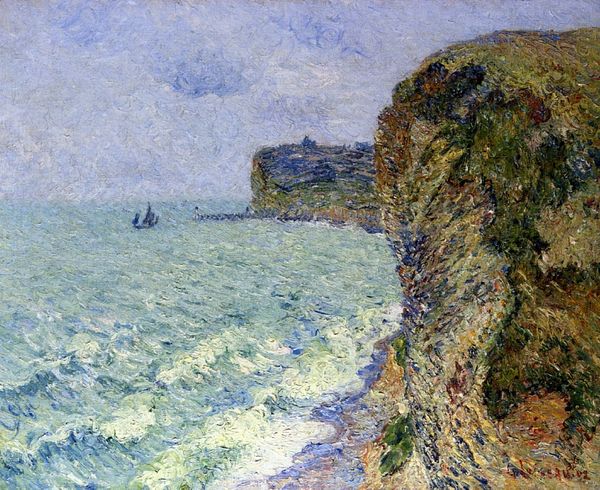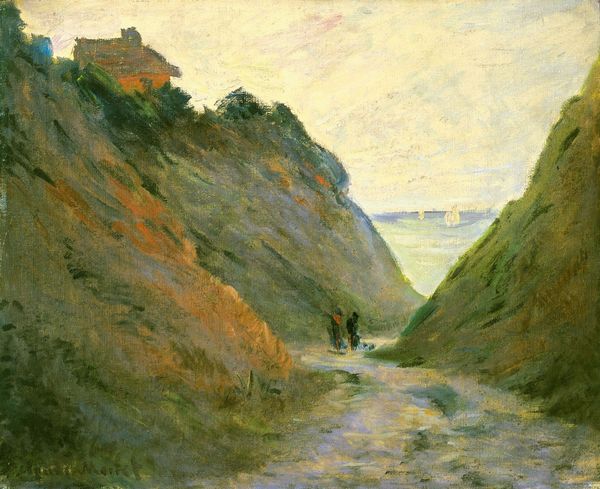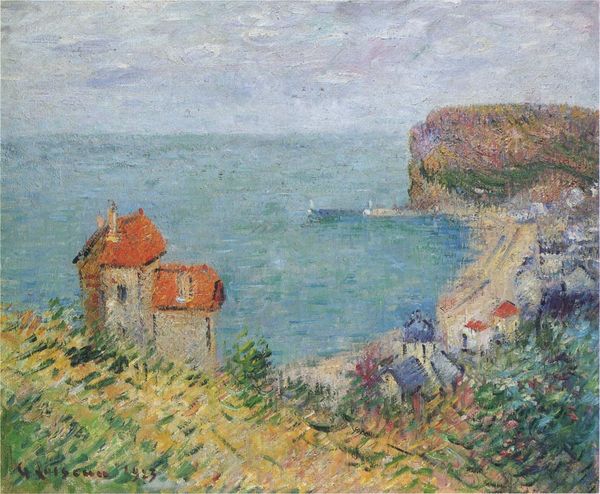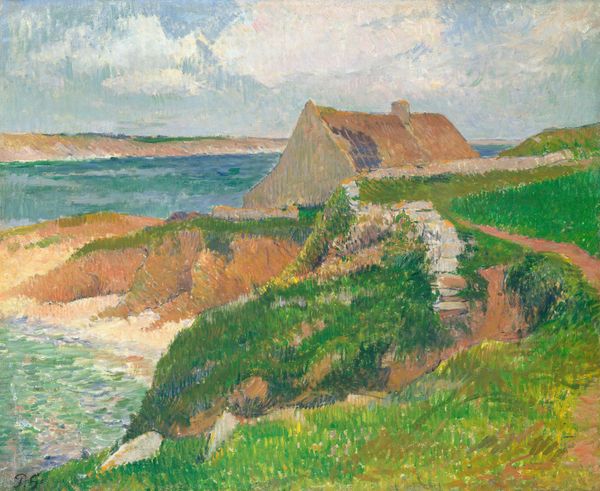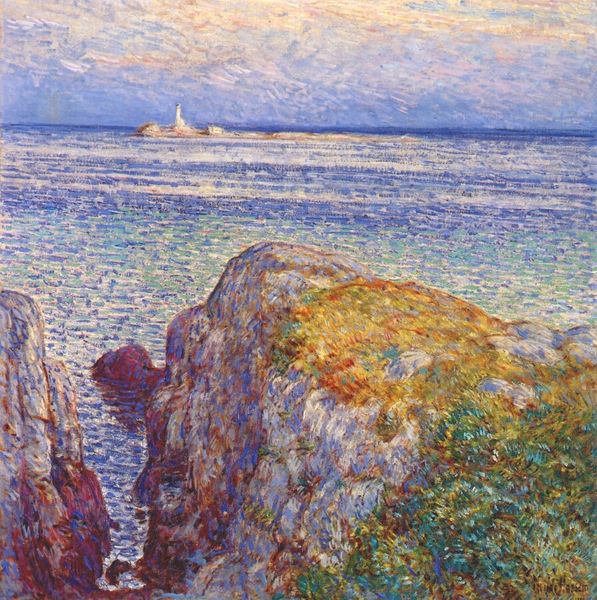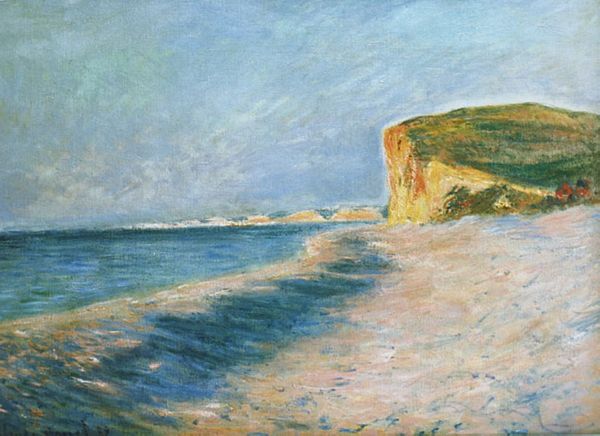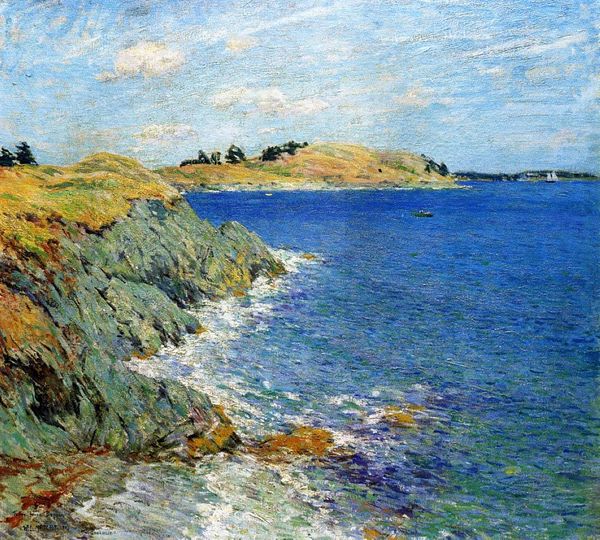
painting, plein-air, oil-paint
#
painting
#
impressionism
#
plein-air
#
oil-paint
#
landscape
#
impressionist landscape
#
oil painting
#
seascape
#
natural-landscape
#
sea
Copyright: Public domain
Editor: So, this is Claude Monet's "Alley near Pourville," painted in 1882 using oil paints, it looks like it was created en plein-air. There's this real sense of light, and the way the path leads your eye right to the ocean is pretty amazing. What do you see in this piece, particularly concerning its place in the art world at the time? Curator: Well, looking at it through a historical lens, it’s essential to remember the context of the late 19th century. Monet and the Impressionists were really challenging the established Salon system. This wasn’t history painting or portraiture meant to glorify the wealthy; instead, it captures an everyday scene, an "alley" no less! It’s deliberately apolitical at first glance, but choosing the ordinary landscape *was* a kind of statement. What does that choice say to you about the shifting power dynamics within art production itself? Editor: I guess it shows a move away from needing a patron to dictate what's "worthy" of art. Painting "en plein air" suddenly makes the artist the main authority. Curator: Exactly! The fleeting impression, painted on the spot, becomes the ultimate goal. Before, art served institutions and power, now it's about something radically individual and sensory. This accessibility challenged academic conventions, reshaping the public’s taste and expanding what was deemed a valuable artistic subject. Notice how Monet’s titles, "Alley near Pourville," aren't grandiose like previous generations; how does this choice affect the image's reception, do you think? Editor: I think it helps people feel like art is about everyday life and nature. It makes the work a little bit less intimidating to approach! Curator: Precisely! These “impressions” democratized art by changing not only what was depicted but also *how* it was perceived and valued. And of course it helped define what painting and museums became, over time. Editor: That gives me so much more to think about! Seeing it as a sort of statement against the establishment shifts my perspective entirely. Curator: It reveals how an apparently innocent landscape painting could reflect deep social and artistic transformations.
Comments
No comments
Be the first to comment and join the conversation on the ultimate creative platform.
